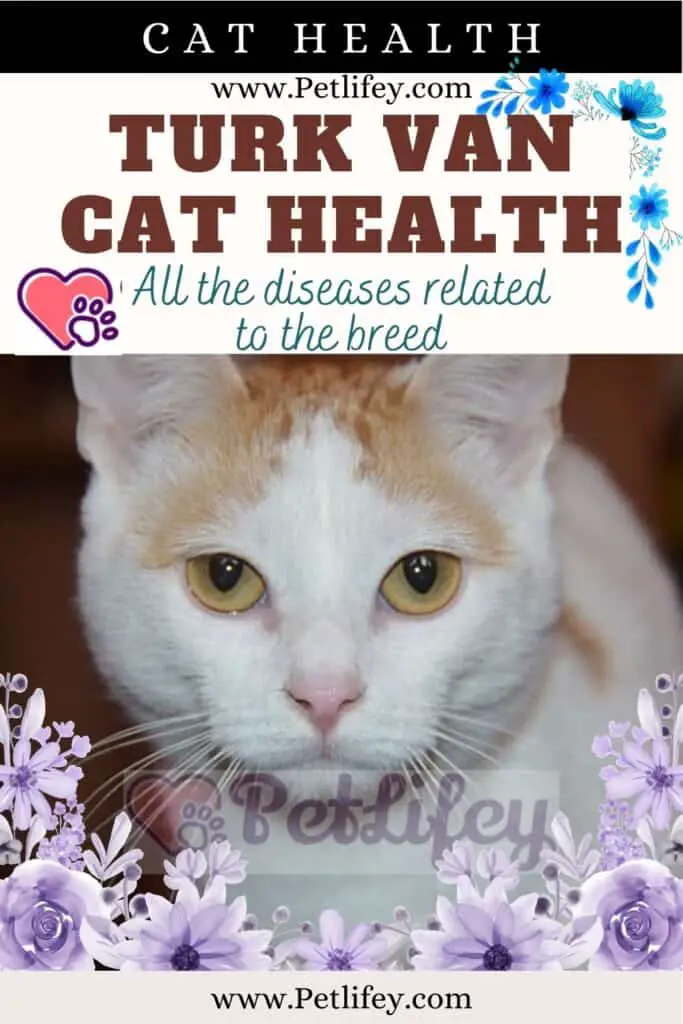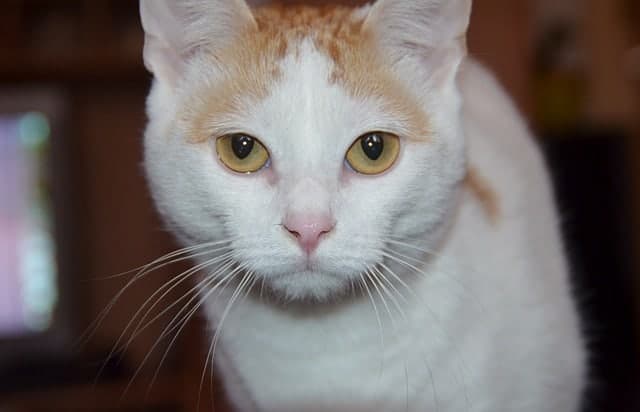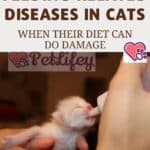Diseases of the Turk Van, the most common pathologies in this truly spectacular and unique breed of cat . Let’s find out together which ones can hit him.

In the next paragraphs you will find everything you need to know about the diseases of the Turkish Van, that is the most common pathologies of this breed of cat coming from Turkey, as you can guess from the same name.
If you have decided to adopt this cat breed, it is advisable that you are aware of everything related not only to the habits and nutrition of this animal but also to what health problems can affect it.
Let’s find out what diseases your Turkish Van can suffer from and what can be done to avoid them.
Diseases of the Turkish Van

The diseases of the Turk Van are more or less the same as all other cats, although like any breed it has a greater predisposition towards some. Let’s see which ones.
Learning to recognize or prevent the diseases that can affect our cat is very important.
Thanks to our initial and early diagnosis it is possible to save the life of our four-legged friend.
Regarding the Turkish Van we can say that it is a medium-sized cat, with a long or semi-long silky coat, with a healthy and robust constitution but with a particular predisposition towards some pathologies.
However this breed has a life expectancy that varies between 15 and 18 years, always if kept under control with due attention and vaccinations.
The Turkish Van is a cat originally from Turkey and more precisely near Lake Van and as we mentioned, although it is a rather healthy cat, it is subject to some specific pathologies, namely :
- Obesity and diabetes: the Turkish Van is a cat as we mentioned with a muscular and massive build, which is why it must be stimulated to move as it has a tendency to gain weight. If he is not carefully monitored and follows a suitable diet, he can find himself in a critical situation concerning obesity in the cat.
- Feline hypertrophic cardiomyopathy (HCM): is a thickening of the heart muscle resulting in a reduction in the volume within the ventricles (main chambers of the heart) of the blood that the heart can pump with each contraction. The affected animal is at risk of developing congestive heart failure and occasionally sudden death. With the intervention of the veterinarian it will be possible to administer a drug therapy that can improve the health of the cat.
- FeLV : known as feline leukemia, it affects the bone marrow and is caused by a virus from the Retrovirus family, including the one responsible for FIV itself. It is transmitted by exchange of blood and saliva, even if not direct, and there is no cure other than the possibility of preventing the disease with vaccination;
- FIV : a is a feline immunodeficiency syndrome similar to human HIV, transmissible through saliva and blood. It is not curable and there is no vaccine but, if intercepted in time, it can sometimes allow a considerable survival;
- Otitis: is the inflammation of the epithelium that covers the ear canal and the auricle. It often occurs when the cat has low defenses.
Other diseases common in all cat breeds
Of course, like all other felines, even the Turkish Van, can suffer from common diseases in cats which can be:
- allergies : the cat can suffer from allergies that can have very different origins;
- conjunctivitis in cats : inflammation of the mucous membranes of the eye;
- cold : it is a light respiratory disease but which in any case must be treated to avoid complications and also be attacked by secondary diseases of the respiratory tract;
- periodontitis : this is an infection that reaches the teeth, generating pus that comes out of the gums and that could be ingested by the feline. In fact, this substance will affect various internal organs, such as the kidneys, liver and even the heart;
- dental resorption : this condition prevents the cat from eating properly and drooling frequently, because the part that covers the tooth is completely worn out. In these cases the veterinarian could prescribe some antibiotics or resolve with dental extraction;
- absorption of the enamel : the enamel tends to detach and the cat to swallow it. The teeth will look different than usual, with a tendency to have red spots on the tissues;
- carcinoma : is the tumor of the mucous membranes of the mouth. It presents with growths, ulcers and peeling of the tissues. A rather serious conduction where it is possible to try with radiotherapy;
- Feline gingivitis : an inflammation of the cat’s gums caused by tartar. The obvious symptoms will be: bleeding, itching, redness and inflammation of the part. The animal must absolutely be treated, generally with antibiotics;
- stomatitis : inflammation of the mucous membrane of the mouth due to the presence of bacteria. Symptoms are: redness, excessive salivation and tissue irritation;
- tartar : Bacteria that attach to food debris and more, form dental plaque, which can worsen and become tartar. Correct oral hygiene and the use of specific objects and snacks for the teeth will suffice to avoid the problem;
- mange: it is caused by a mite of which there are different species and subspecies that behave in different ways. It is transmissible to other animals and to humans, there are several types and has symptoms similar to eczema: itching, scabs, patchy hair loss. This disease is also called scabies;
- Toxoplasmosis: an infectious disease caused by the parasite Toxoplasma gondii, which finds its final host in the feline where it can reproduce.






